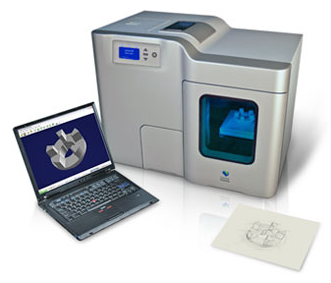 I remember my high school got a CNC milling machine – a device that would allow you to feed in 3D drawings over the network for the milling machine to carve out of metal, plastic, or wood. It was revolutionary for the time.
I remember my high school got a CNC milling machine – a device that would allow you to feed in 3D drawings over the network for the milling machine to carve out of metal, plastic, or wood. It was revolutionary for the time.
Fast forward to today. We’re rapidly approaching the kind of “fabrication on demand” envisioned by science fiction from Star Trek to The Diamond Age. Already there’s a 3D printer that costs less than $5K and can fit comfortably on your desk. Meanwhile, the Open Source community is working hard to make the same capabilities available for free through the Fab@Home project.
More interestingly, a number of services have appeared online that provide creators with access to sophisticated rapid prototyping capabilities. Offline services, such as TechShop in the Bay Area, provide creators with access to tools. But that is just a stopgap between dedicated hardware, and on-demand online services that print custom objects. Online services such as eMachineShop provide the ability to perform heavy-duty machining to create custom components in a wide array of materials, whereas providers like Shapeways provides the ability to create 3D objects in a variety of plastics. And it probably won’t be long until we see services allowing users to print circuit boards using cheap inkjet technology.
One of the more interesting services I’ve seen so far has been Ponoko, which allows creators to use laser cutting to punch out shapes in cardboard, felt, wood, metal, or plastic. While this service is slightly more limited, given that it can only create 2D shapes, it has a unique ability to create objects from photos – no CAD software required.
As these rapid prototyping services have come online, many have incorporated a marketplace for creators to sell their wares. Which begs the question: how long until we see a clandestine trade develop around electronic blueprints for common goods that can be cheaply manufactured using these services? The “Napster of Things” can’t be too far behind…
